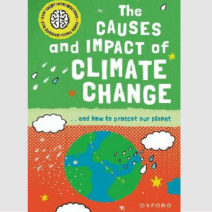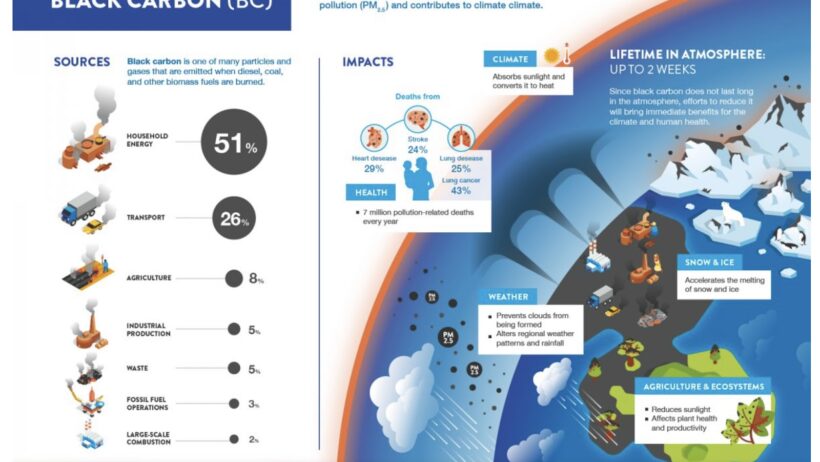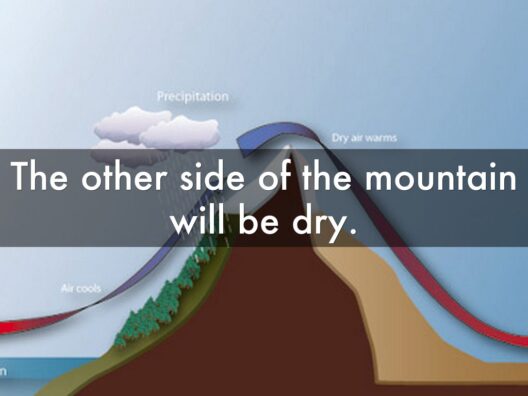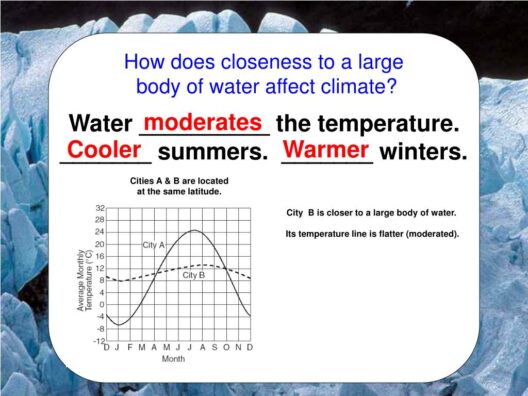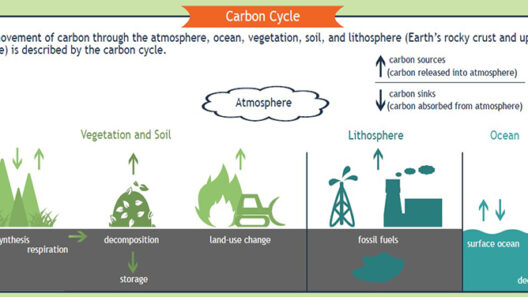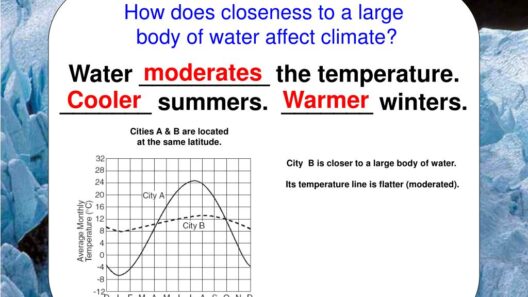Black carbon, a potent atmospheric aerosol, constitutes an insidious yet often overlooked component of air pollution. Unlike greenhouse gases, black carbon can be categorized under particulate matter; it emerges primarily from the incomplete combustion of fossil fuels, biomass burning, and other anthropogenic activities. This article delves deep into black carbon’s characteristics, its sources, its implications for climate change, and potential mitigation strategies.
Origins and Nature of Black Carbon
Black carbon is a fine particulate matter, primarily composed of carbon in a elemental form. Its formations result from various combustion processes—primarily associated with diesel engines, coal-fired power plants, residential heating through wood burning, and forest fires. This carbonaceous material is distinguished by its dark color and ability to absorb sunlight, which provokes significant interactions within the Earth’s atmosphere.
When emitted into the atmosphere, black carbon particles can travel hundreds to thousands of kilometers, influencing climate far from their source. The critical aspect of black carbon lies in its capacity to absorb solar radiation, which exacerbates atmospheric warming. Its blackened surface enables it to harness heat, leading to immediate temperature rise in the surrounding air. The implications are not merely localized airing but extend to global climate dynamics.
The Climate Implication of Black Carbon
The repercussions of black carbon are manifold, particularly in the context of climate change. When suspended in the atmosphere, these particles can contribute to what is known as ‘radiative forcing’—a term that describes the change in energy balance of the Earth’s atmosphere as a result of an increase in greenhouse gases and aerosols. Research indicates that black carbon plays a significant role in warming the earth, showing a radiative forcing effect that is considerably stronger than that of carbon dioxide on a per molecule basis.
One critical area affected by black carbon is the cryosphere—regions of the Earth’s surface where water is in solid form, including glaciers and sea ice. When black carbon settles on snow and ice, it diminishes their albedo, the extent to which surfaces reflect sunlight. Darkened surfaces absorb more solar energy, accelerating melting processes in glaciers and polar ice caps. This phenomenon makes black carbon a direct contributor to rising sea levels, biodiversity loss, and altered freshwater availability.
An often underappreciated effect of black carbon emissions arises from their impact on the atmospheric circulation patterns, which subsequently influence global weather systems. The alteration of these patterns can lead to extreme weather events, affecting agricultural yields, water supply, and even human health. The heating of the lower atmosphere can change the precipitation patterns, inadvertently increasing droughts in some areas while causing floods in others.
Health Impacts
The health implications tied to black carbon emissions cannot be understated. The particles can penetrate deep into human respiratory systems, leading to a variety of cardiovascular and pulmonary diseases. Moreover, exposure to black carbon has been associated with increased mortality rates due to respiratory ailments, particularly among vulnerable populations, including children and the elderly. The public health burden compounded with its climatic effects underscores the urgent need to address this pollutant.
Mitigation Strategies
Addressing black carbon requires urgent action at both local and global scales. One of the most effective strategies involves the regulation of emissions from traditional combustion sources. Transitioning to cleaner technologies, such as electric or hybrid vehicles, can significantly mitigate black carbon output from the transportation sector. In residential areas, promoting clean cookstoves and efficient heating practices can drastically reduce emissions from biomass burning.
International initiatives, such as the Climate and Clean Air Coalition (CCAC), aim to catalyze efforts to reduce black carbon emissions globally. By fostering cooperation between countries, the coalition provides a platform for sharing best practices, technologies, and approaches to effectively tackle pollution while also aiding climate change mitigation efforts. Such cooperative actions underline the interlinking nature of air quality and climate stability.
Conclusion
In summary, black carbon is a formidable contributor to climate change and air pollution, wielding profound impacts that reach far beyond local emissions. Its ability to absorb sunlight and alter atmospheric conditions makes it a critical focus point for mitigating climate change. The convergence of health concerns and environmental imperatives creates a compelling narrative for action against black carbon emissions. By re-evaluating our combustion practices, supporting cleaner technologies, and encouraging collaborative international efforts, it is possible to stifle this dark antagonist in the struggle against climate change. The road to mitigation is challenging but essential for fostering a healthy planet and a sustainable future.

